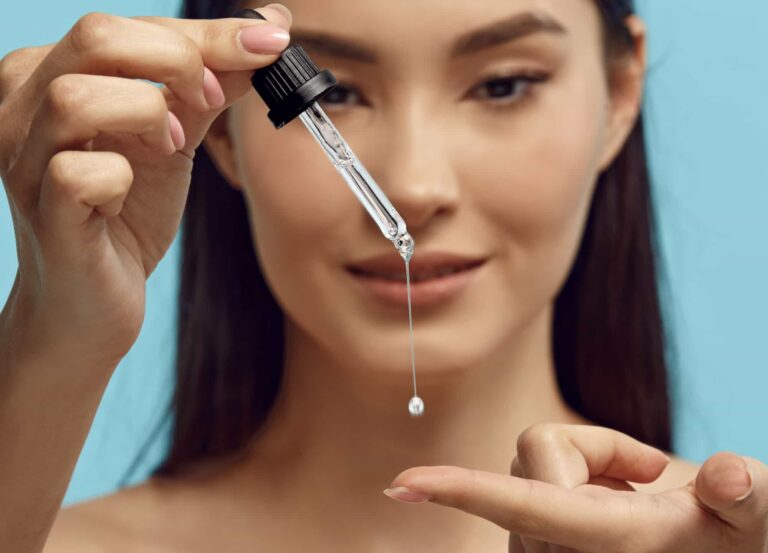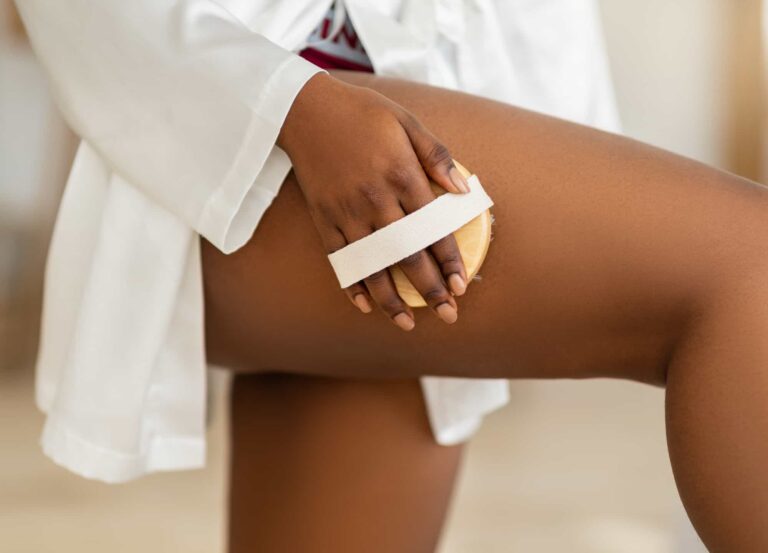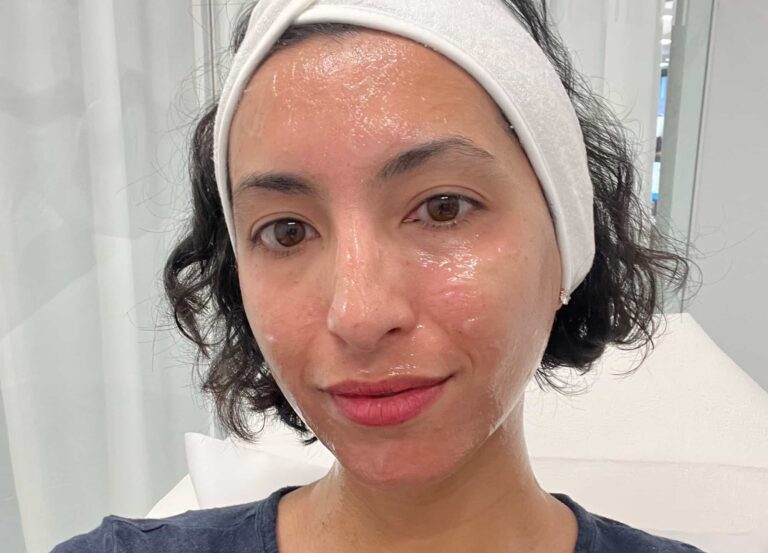I’m 28 years old, and for the past 15 years, I’ve been struggling to get my cystic hormonal acne under control. The large, red, painful volcanos on my chin usually pop up right before my period and rarely come to a head, so there have been many times I’ve turned to an emergency cortisone injection.
A few months ago, I took a trip to New York City and stopped in at my former dermatologist’s office, to test out some of the newest technology. While there, I asked if I could get a quick cortisone shot for a flaming red cyst—a painful bugger hidden underneath heavy coats of concealer that left me embarrassed and ashamed each time I met with a beauty industry colleague. The pressure to have perfect skin is always high when you work in beauty, and during this trip, I was feeling less than stellar about my pizza face.
Here’s what happened after my cortisone shot
The cortisone shot and pimple-draining procedure (in which the derm used a lancet to drain the pus) collapsed the cyst within hours and restored my confidence—but back home in Boston, a week later, I was shocked to find a pretty severe indentation on my chin where my cyst had been injected. Panicked, I began Googling everything there was to know about cortisone shots for acne and their side effects. The term “ice pick scar” kept coming up, and I worried I’d be left with this minor gouge for eternity.
Related: 14 Skin-Care Ingredients for Busting Cystic Acne
I made an appointment with a new dermatologist, to get the scar checked out, then sought out at-home treatments to help reduce the scar’s appearance. I ended up using my GloPRO Microneedling Facial Tool ($199), which uses tiny needles to create micro injuries in the epidermis, to trigger the skin’s healing process over the indented area, in the hope of building up collagen and smoothing the area.
Thankfully, the device seemed to work, because by the time I saw my new derm, the scar was significantly reduced. At my appointment, Dr. Papri Sarkar, a board-certified dermatologist in Brookline, Massachusetts, told me that scarring from the shot is rather rare. “I do think that it can depend on who is administering the shot—the most important things to consider when treating acne with cortisone injections are the characteristics of the lesion you’re treating, the concentration, the amount of cortisone you’re injecting, and the depth of injection. Someone well-trained in cortisone shots for acne can nimbly navigate all those things and customize it to an individual patient.”
In order to get a cortisone shot, your cyst has to meet certain requirements. “You really need to have an acne cyst that’s acute [that started recently], is elevated [from the surface of the skin], and is large enough [in terms of elevation] to handle a cortisone shot,” says Dr. Sarkar. “The ones that are more inflamed respond better, but the ones that are more inflamed are also more likely to cause a scar [with or without a cortisone shot].”
Although many patients do come into her office for cortisone shots to treat acne, Dr. Sarkar tells me that she says no to patients more often than she agrees to inject them. “That’s because cortisone decreases the inflammation in an acne cyst and causes it to decrease in size and elevation,” she says. “The problem is that if a pimple or acne cyst isn’t very elevated or is already on its way out, injecting cortisone in this area can make it too flat and can cause an indentation.” Unfortunately, Dr. Sarkar speculates that this is exactly what happened to me.
The tricky thing though is that acne on its own can cause scarring or various shaped indentations in the skin, so it’s often hard to tell if the acne scar was caused by the injection, according to Dr. Sarkar. “In general though, if a patient has a pimple that is pretty flat, is already in the healing phase, or has a strong history of healing with scars post cortisone injection, I say no—in my opinion, it’s better to have Mother Nature work her magic, in those cases.”
Related: The 5 Treatments RealSelf Editors Can’t Wait to Try in 2020
Whether you let the pimple go away on its own or opt for the faster fix, you are still at risk for getting a scar that’s either atrophic or hypertrophic. “Atrophic, or indented, scars comprise about 80–90% of scars, while bumpy, hypertrophic ones are about 20%,” says Dr. Sarkar. “The scars are generally due to loss or gain of collagen and, sometimes, fibrous tissue. There are three types of atrophic scars—called ice pick [the most common], boxcar, or rolling scars.” Unlike ice pick scars, which are deep and narrow, boxcar scars are square-shaped depressions with defined edges, while rolling scars are more wavelike and aren’t sharply defined.
If you do suffer from an atrophic scar after a cortisone shot, there are multiple in-office treatments you can try, to fix it. “Treating an ice pick scar left behind by a cortisone injection is similar to treating ice pick scars left behind with acne—options include microneedling, laser, TCA cross chemical peel, and filler,” says Dr. Sarkar.
Because of my scare, I’ll be avoiding cortisone shots for acne and taking Dr. Sarkar’s treatment suggestion instead: if topical medications don’t do the job, ask the derm to unroof the cyst and allow the pus to drain before applying a pimple patch to help draw out the remaining fluid. If even that sounds too risky, you might just have to let Mother Nature do her thing, uninterrupted.











